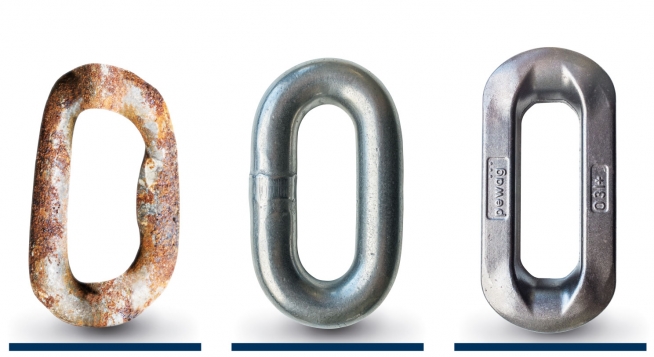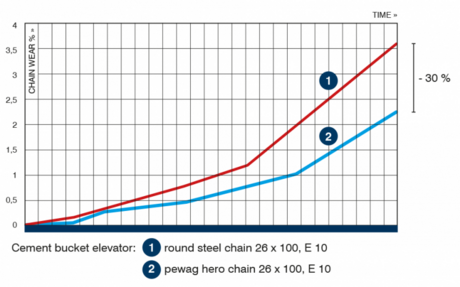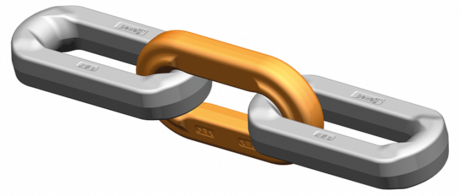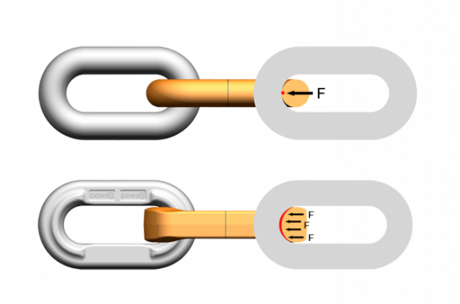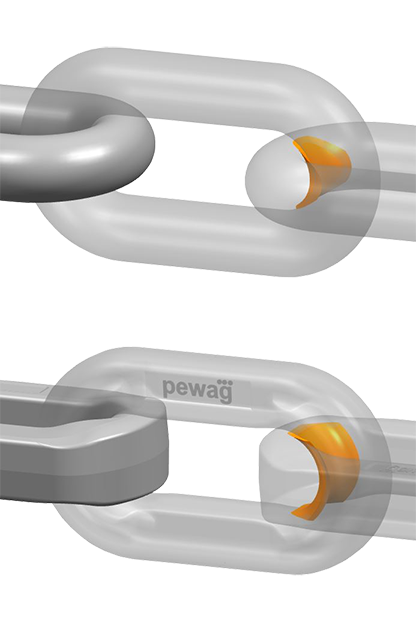Hero friction welded chain

A new era of chains
Chains have been produced for decades using the samemethodology: cutting steel wire or bar, bending them into the desired link shape and welding them together with energy intensive processes like resistance or flash butt welding.
Forged chain components
The limiting factors of this conventional technology are the shape of the chain links (round) as well as the weldability of the steel grade, which very much depends upon the carbon content and alloying elements.
pewag hero an innovative friction welded chain goes beyond these limits and opens the door to a new world of chains.
Advantages of friction welding
Melt-free technique
- no grain-growth
- very small heat-affected zone (near zero residual stresses)
Reduced surface pressure & increased wear volume
- no grain-growth
- very small heat-affected zone (near zero residual stresses)
Clean joining
- contaminations between the contact surfaces will be carried away by the plasticized working mass, being pressed out during joining of the forged components
No material limits
Reduced surface pressure
- every chain application has its special demands – the use of forged components can address critical factors like adding wear volume in the interlink section or legs of the link to drastically improve wear life of the chain
No shape limits
- every chain application has its special demands – the use of forged components can address critical factors like adding wear volume in the interlink section or legs of the link to drastically improve wear life of the chain
Reduced surface pressure & increased wear volume
- The geometry of traditional round steel chains provides a small interlink contact area and subsequent high stresses.
- The load specific geometry of pewag hero chain has increased interlink contact area and more than twice the wear volume of a conventional chain. This leads to significantly reduced contact- and maximum stress, better performance and approximately 30% longer service life.
Evolution of the chain...
